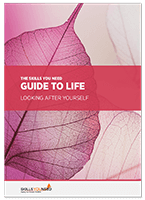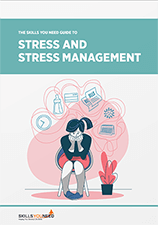The Importance of Exercise
See also: Dieting and Weight LossWe all know that exercise is important in our daily lives, but we may not know why or what exercise can do for us.
It’s important to remember that we have evolved from nomadic ancestors who spent all their time moving around in search of food and shelter, travelling large distances on a daily basis. Our bodies are designed and have evolved to be regularly active.
In the same way that a sports car is designed to go fast, we are designed to move. If the sports car is taken out once a week for a 3 mile round trip through a town centre then it would probably develop engine problems fairly quickly.
Over time people too develop problems if they sit down all day at a desk or in front of the TV and minimise the amount of exercise they do.
The Benefits of Exercise
There are many benefits of regular exercise and maintaining fitness and these include:
Exercise increases energy levels
Exercise improves both the strength and the efficiency of your cardiovascular system to get the oxygen and nutrients to your muscles. When your cardiovascular system works better everything seems easier and you have more energy for the fun stuff in life.
-
Exercise improves muscle strength
Staying active keeps muscles strong and joints, tendons and ligaments flexible, allowing you to move more easily and avoid injury. Strong muscles and ligaments reduce your risk of joint and lower back pain by keeping joints in proper alignment. They also improve coordination and balance.
Exercise can help you to maintain a healthy weight
See our page: Dieting and Weight Loss for more information.
The more you exercise, the more calories you burn. In addition, the more muscle you develop, the higher your metabolic rate becomes, so you burn more calories even when you’re not exercising. The result? You may lose weight and look better physically which will boost your self-esteem.
Exercise improves brain function
Exercise increases blood flow and oxygen levels in the brain. It also encourages the release of the brain chemicals (hormones) that are responsible for the production of cells in the hippocampus, the part of the brain that controls memory and learning. This, in turn, boosts concentration levels and cognitive ability, and helps reduce the risk of cognitive degenerative diseases such as Alzheimer’s.
See our pages: Keeping your Mind Healthy and Memory Skills for more information.
There is overwhelming evidence that people who lead active lifestyles are less likely to suffer from illness and more likely to live longer.
-
Exercise is good for your heart
Exercise reduces LDL cholesterol (the type that clogs your arteries), increases HDL (the good cholesterol) and reduces blood pressure so it lowers the stress on your heart. Added to this, it also strengthens your heart muscle. Combined with a healthy diet, exercise lowers the risk of developing coronary heart disease.
-
Regular exercise lowers your risk of developing type 2 diabetes
Regular exercise helps to control blood glucose levels, which helps to prevent or delay the onset of type 2 diabetes. Additionally exercise helps to prevent obesity, which is a primary factor in the development of type 2 diabetes.
-
Exercise enhances your immune system
Exercise improves your body’s ability to pump the oxygen and nutrients around your body that are required to fuel the cells that fight bacteria and viruses.
-
Staying active reduces the likelihood of developing some degenerative bone diseases
Weight bearing exercise such as running, walking or weight training lowers your risk of both osteoarthritis and osteoporosis – the adage of “use it or lose it” really does apply to bones.
-
Exercise may help to reduce the risk of certain cancers
Being fit may mean that the risks of colon cancer, breast cancer and possibly also lung and endometrial cancers are reduced. Studies by the Seattle Cancer Research Centre have suggested that 35% of all cancer deaths are linked to being overweight and sedentary.
Exercise not only makes you physically fitter but it also improves your mental health and general sense of well-being.
Active people tend to sleep better
Physical activity makes you more tired so you’re more ready to sleep. Good quality sleep helps improve overall wellness and can reduce stress.
See our page The Importance of Sleep for more information.-
Exercise improves your mood and gives you an improved sense of well-being
Physical activity stimulates the release of endorphins which make you feel better and more relaxed. These in turn improve your mood and lower your stress levels.
-
Exercise can help prevent and treat mental illnesses like depression
Physical activity can help you meet people, reduce stress levels, cope with frustration, give you a sense of achievement, and provide some important “me time”, all of which help with depression.
-
Keeping fit can reduce some of the effects of ageing
Exercise can be fun!
Getting fit is not just about running on a treadmill for hours in your local gym, it can be a dance class or a new hobby like fencing or mountain biking. It could be a group or team activity like football or a karate class.
Whatever form of exercise you choose, you’ll almost certainly meet new people and may make new friends.
How Much Should you Exercise?
According to the American College of Sports Medicine, current guidelines suggest that to stay healthy, adults between 19 and 64 should try to be active daily and follow these recommendations:
Cardiorespiratory Exercise
Cardiorespiratory exercise, often abbreviated to 'cardio', is any exercise that increases the heartbeat and breathing rate.
Such exercises include walking, running, swimming, cycling, dancing and team sports such as football, hockey, basketball etc.
You should get at least 150 minutes of moderate-intensity exercise per week.
These recommendations can be achieved through 30-60 minutes of moderate-intensity exercise (five times a week) or 20-60 minutes of vigorous-intensity exercise (three times a week) or a combination of both types.
One continuous session combined with multiple shorter sessions (of at least 10 minutes) is also acceptable.
For those starting out, gradual progression of exercise time, frequency and intensity is recommended. You are more likely to stay on track and avoid injury if you start gently.
Even if you can't reach these minimum targets you can still benefit from some activity.
Resistance Exercise
Resistance exercise is concerned with working the bodies muscle groups and building strength.
It is recommended that adults train each major muscle group two or three days each week using a variety of exercises and equipment.
Very light or light intensity resistance training is best for older persons or previously sedentary adults new to exercise
Two to four sets of each exercise will help adults improve strength and power.
For each exercise, 8-12 repetitions improve strength and power, 10-15 repetitions improve strength in middle-age and older persons starting exercise, while 15-20 repetitions improve muscular endurance.
It is recommended that adults should wait at least 48 hours between resistance training sessions.
Moderate vs Vigorous Intensity
There are a number of different ways to classify the intensity of any exercise, some based on heart rate, some on perceived exertion and some on how the exercise affects your metabolic rate.
Generally Speaking...
Moderate-intensity activity should raise your heart rate, make you breathe faster and make you feel warm enough to start to sweat.
Vigorous intensity exercise will make you breathe hard, increase your heart rate significantly and make you hot enough to sweat profusely.
The Physical Activity Guidelines for Americans suggests that moderate-intensity activity allows you to talk but not to sing, whereas more vigorous activity results in an inability to say more than a few words without pausing for a breath.
Examples of moderate intensity exercise include:
- Brisk walking (100 steps/minute)
- Dancing
- Swimming or aqua aerobics
- Gentle cycling (5-9mph)
- Badminton or doubles tennis
- Volleyball
Examples of vigorous intensity exercise include:
- Running
- Power walking at 5mph or more, or walking uphill briskly
- Cycling faster than 10mph
- Aerobics
- Martial arts
- Competitive sports (football, basketball, rugby etc.)
- Skipping/jump rope
- Rowing
Overall though, any activity that gets you moving, gets your heart rate up and gives you enough pleasure to do it regularly and often is good for you in almost every way.
Have fun, be healthy and feel good!
Further Reading from Skills You Need
The Skills You Need Guide to Stress and Stress Management
Understand and Manage Stress in Your Life
Learn more about the nature of stress and how you can effectively cope with stress at work, at home and in life generally. The Skills You Need Guide to Stress and Stress Management eBook covers all you need to know to help you through those stressful times and become more resilient.


